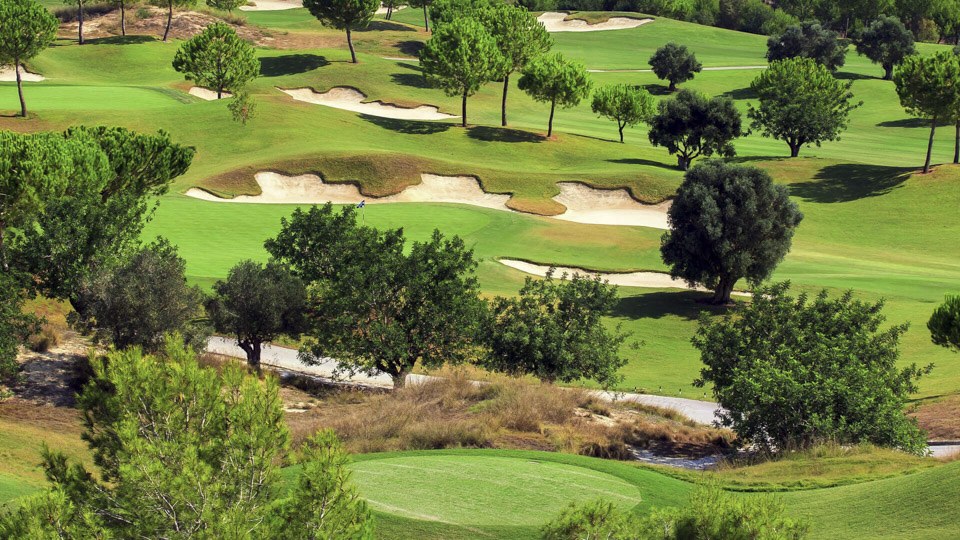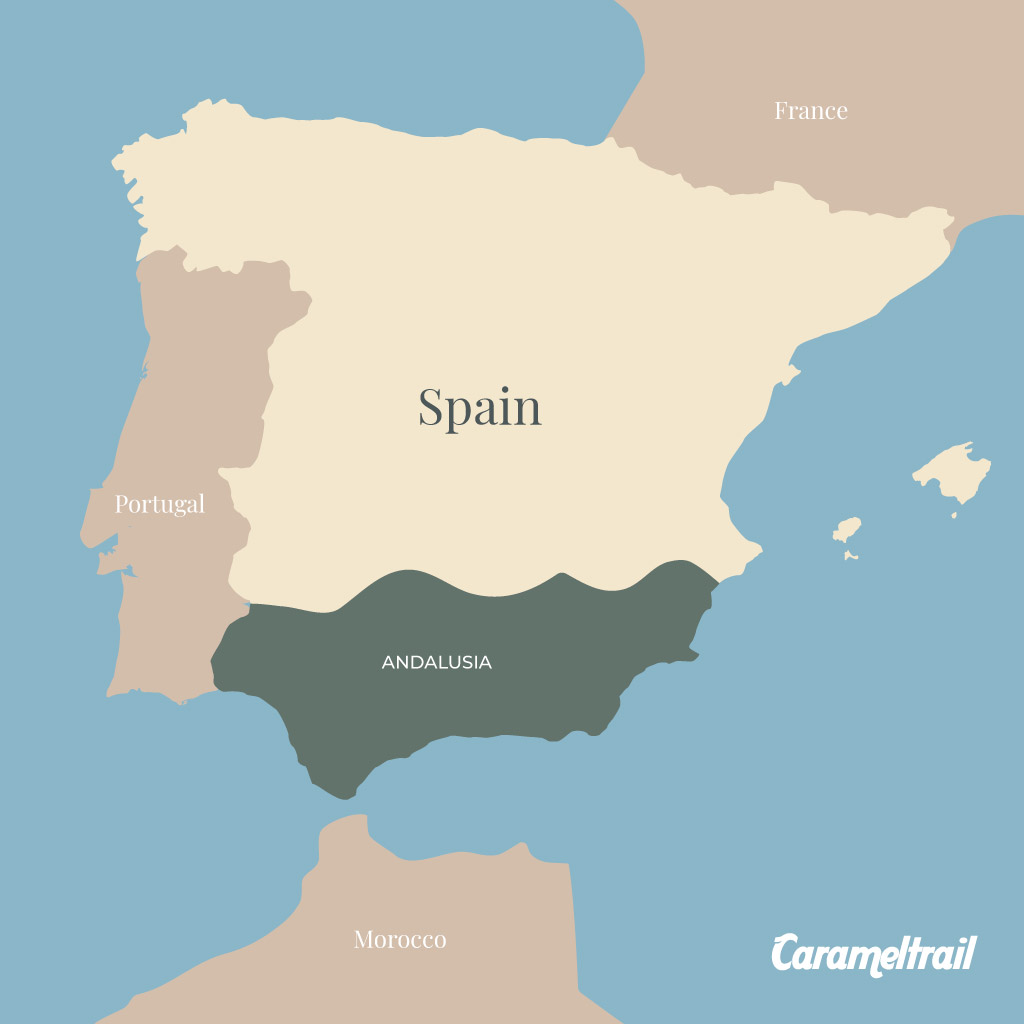
Costa de la Luz: Gulf of Cadiz and Vejer de la Frontera
If you are looking for an exciting place full of things to do in Spain, beaches to visit or parks to go for a walk on, Costa de la Luz is a great alternative. Here you have great cities and towns of different sizes very near to each other, so you can choose what kind of experience you have, either a relaxing trip to a small town, to disconnect for a while, or an exciting adventure to a major city.
The Costa de la Luz (the coastline of light) stretches over the entire Atlantic coast of the Andalusian coastline, from the Gulf of Cadiz to the Strait of Gibraltar. The long beaches of the Costa de la Luz in Spain are formed by endless dunes, sometimes colored with pine forests. The sand is gilded by considerable annual sunshine and the hotel and tourist infrastructures are well developed.
TRAVELLING TO COSTA DE LA LUZ
Spain’s tourist industry continues to thrive with tourists travelling to Spain from France, Belgium, Holland, Denmark, Sweden, Germany and the UK. The area remains popular with many Spanish tourists from all over Spain. Meanwhile, the increase in affordable airline connections from many European cities to airports such as Seville, Jerez, Malaga, Gibraltar, and Faro make travelling to Costa de la Luz much easier.
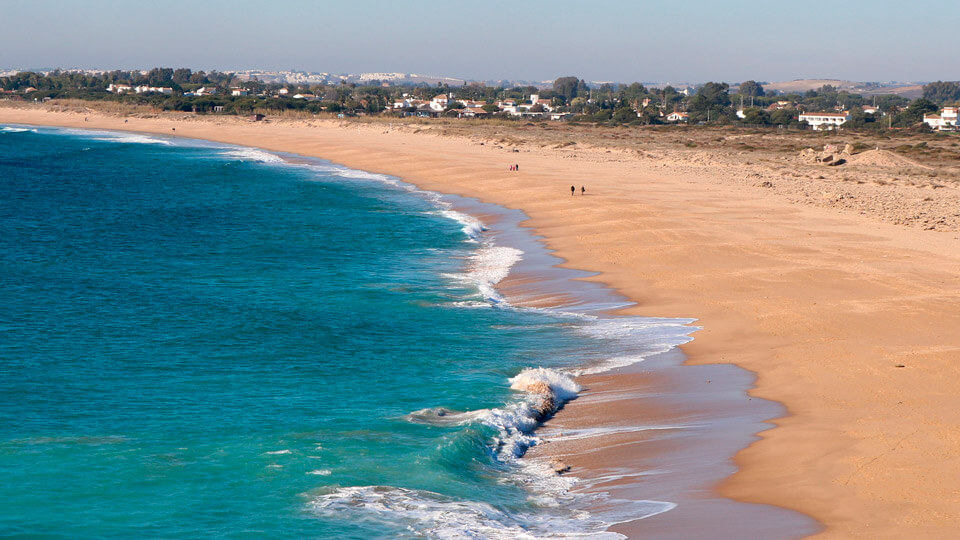
CADIZ – SPAIN: ITS COAST AND GULF OF CADIZ
According to Spain Info: Cádiz is the oldest city in Western Europe and was founded 3.000 years ago by the Phoenicians.
Cadiz city is situated on the Gulf of Cádiz along the Atlantic Coast, near the Costa de la Luz, which boasts 300 days of sunshine a year.
Despite its unique site (on a narrow slice of land surrounded by the sea), Cádiz is a typically Andalusian city with a wealth of attractive vistas and well-preserved historical landmarks.
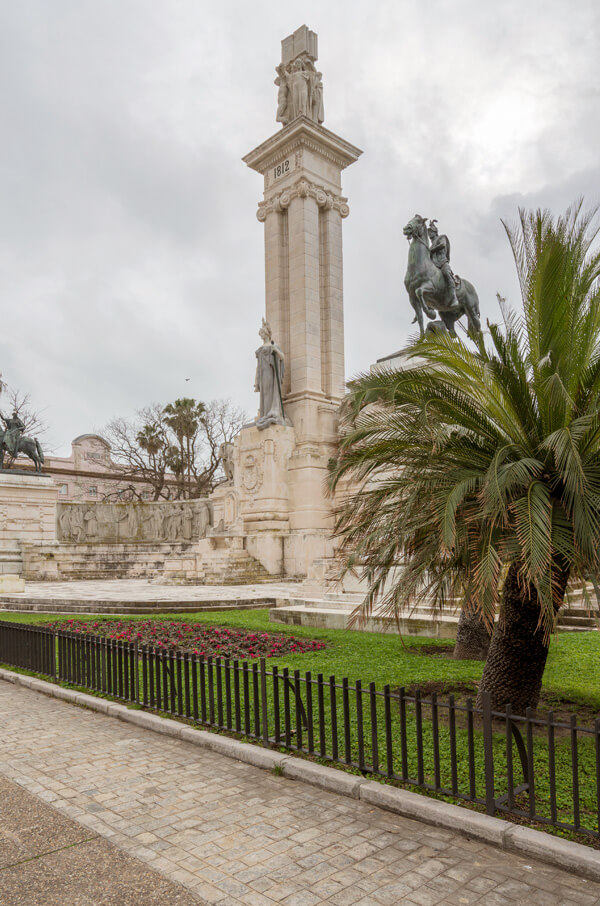
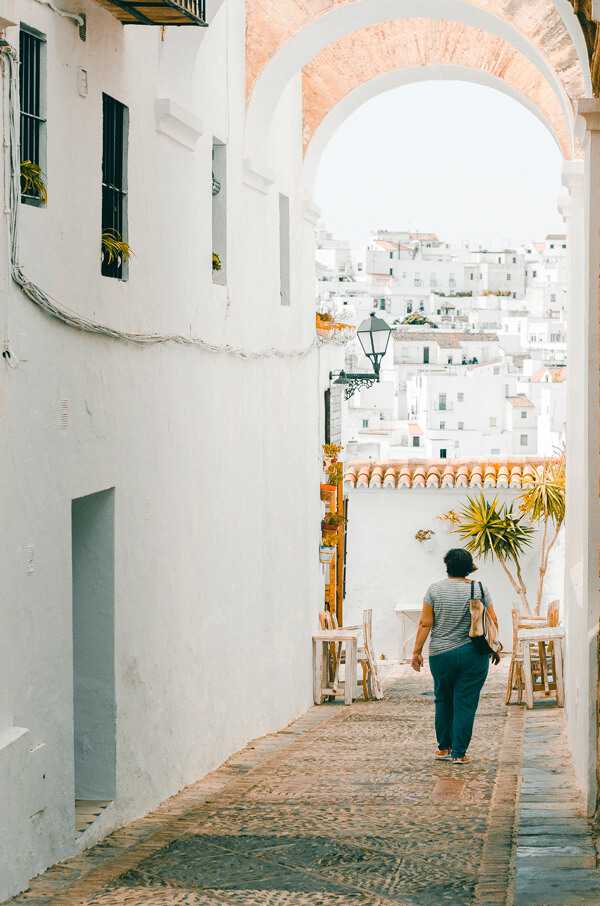
The older part of Cádiz in Spain is referred to as the Old Town (Spanish: Casco Antiguo). It is characterized by the antiquity of its various quarters (barrios), which present a marked contrast to the newer areas of town.
Meanwhile, newer areas of Cádiz typically have wide avenues and more modern buildings. In addition, the city has numerous parks where exotic plants flourish, including giant trees supposedly brought to Spain by Columbus from the New World.
With beautiful beaches facing the ocean and nautical structures, its bay, Cadiz is a pleasant seaside destination.
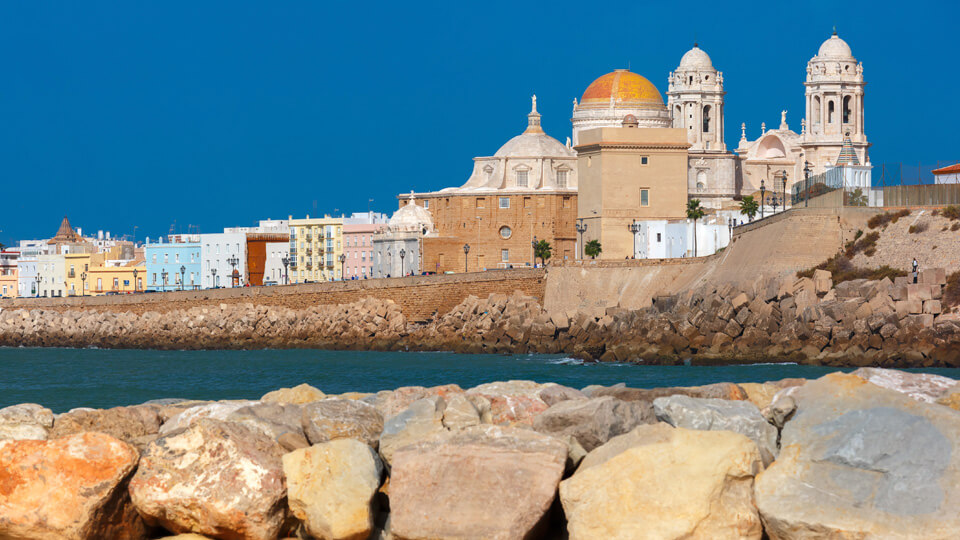
HIT AND RELAX ON THE BEACHES IN CÁDIZ
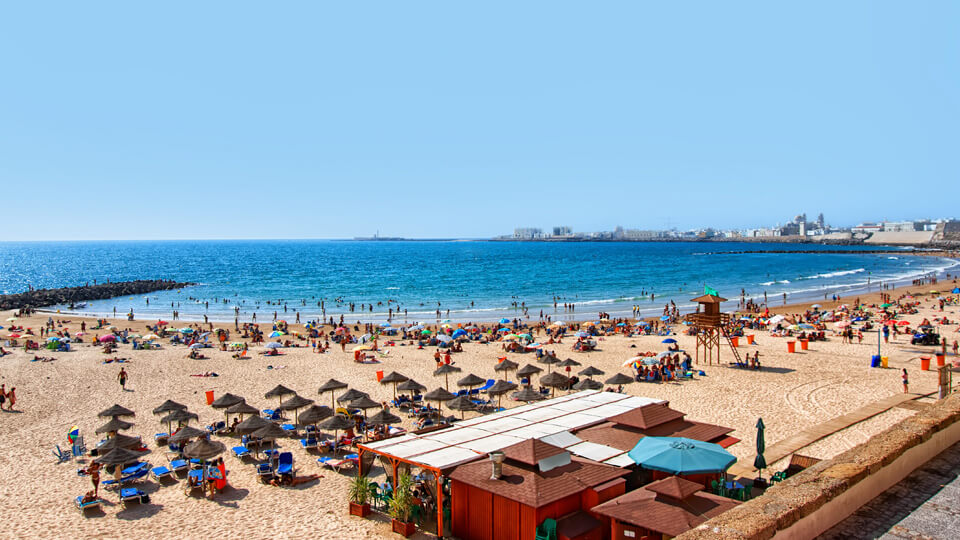
The beaches around Cadiz have won plenty of awards, including being recognized as one of the best urban beaches in Europe. La Caleta at one end of the peninsula is a popular spot with both tourists and locals, but it can get a little crowded.
Unlike many beaches in Spain, the beaches of Cádiz have not been spoiled by rampant development or high-rise hotels.
The coast is full of different beaches and the promenades of Cadiz are a good choice for walking.
Caños de Meca in Cadiz: a bohemian corner of Southern Europe
There are some places that just can’t be found anywhere else in the world and Caños de Meca is one of them. It is located in the South of Andalusia, and became a focal point for the hippie and bohemian movement of the 1960s.
Today, it remains a haven for those in search of ‘karma’, the tranquility of endless beaches, crystal clear waters, all set in the Breña Natural Park, offering vegetation consisting mostly of pinyon pines falling growing just beside the sea.
Caños de Meca is a small street of low houses situated on top of a cliff, but during the summer it becomes the ‘mecca’ of hippies, surfers, bohemians, naturists and increasingly family tourists.
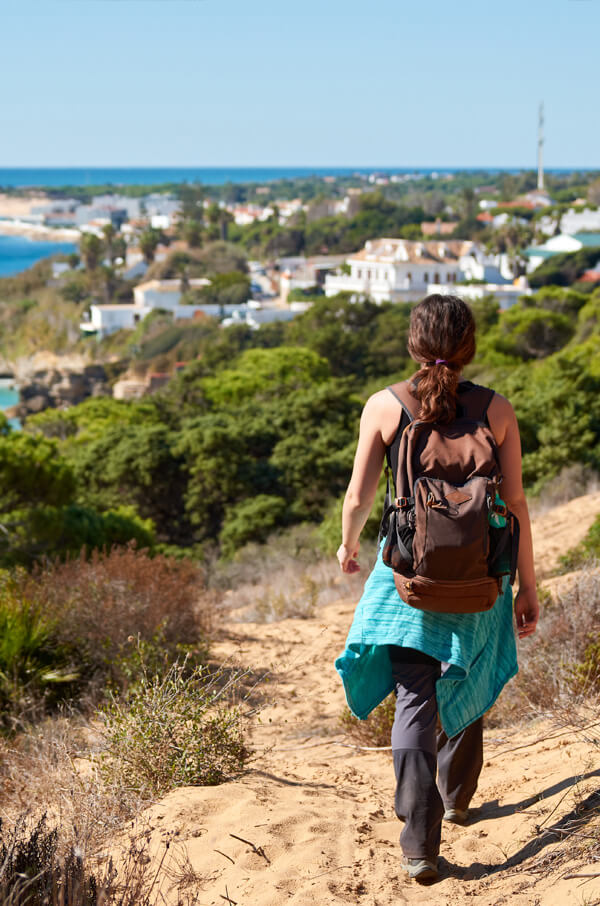
FIESTAS DEL CARNAVAL DE CADIZ
For a truly memorable experience, you should visit Cádiz during the joyous Fiestas de Carnaval, when the town becomes the scene of a big party. The festival begins on Shrove Tuesday, usually in February or early March, and lasts for 11 days.
The “Carnaval de Cadiz” history dates back centuries and was influenced by the legendary Carnival of Venice, one of Cádiz’ old trading partners. During the festival, locals and tourists alike dress up in costumes and take part in celebrations on the street.
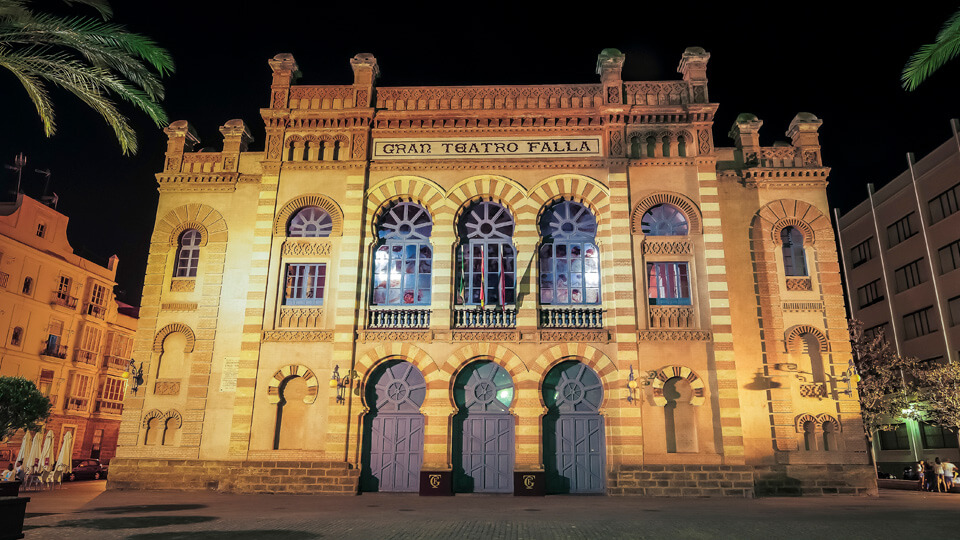
On the first Sunday of Carnival, thousands of merrymakers come out to watch the Gran Cabalgata (Carnival parade), which features a procession of classic floats (groups of people in costume with music).
On the last weekend, the Cabalgata del Humor (Comedy Parade) entertains crowds with silly humor, noisy music, and crazy costumes.
VEJER DE LA FRONTERA, THE WHITE VILLAGE IS WAITING FOR YOU IN CÁDIZ (SPAIN)
Spain has many white villages that have their charm and need your attention. Among those, a few kilometres from the Atlantic Ocean, Vejer de la Frontera is a charming white village built on two hills between Tarifa and Cadiz.
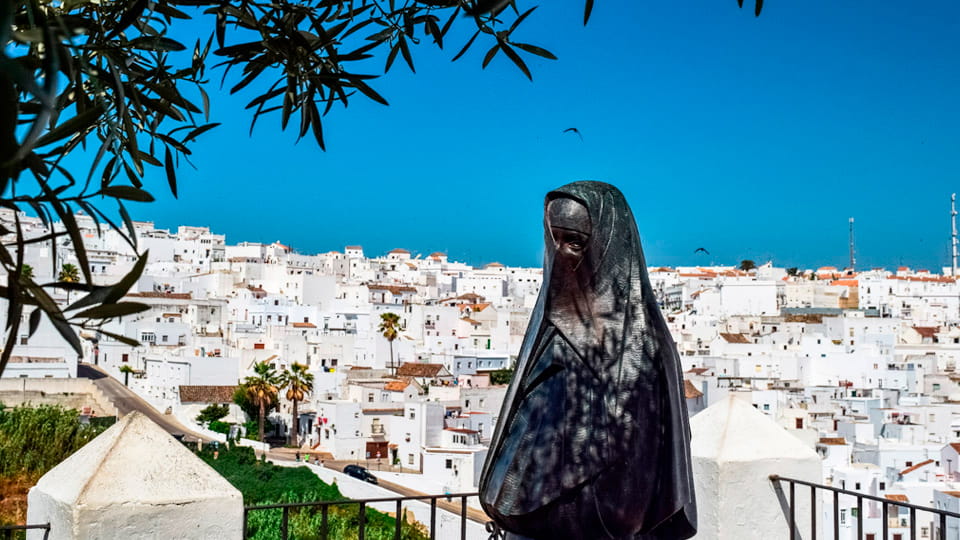
Vejer de la Frontera occupies a low hill overlooking the Straits of Gibraltar and it´s surrounded by orchards and orange groves. It contains several ancient churches and convents, and the architecture of many of its houses recalls the period of Moorish rule.
Here agriculture and fruit-farming are the chief industries, while fighting bulls are also bred in the neighborhood and a running of the bulls is held annually. All these between small narrow lanes that are lined with white houses with pleasant patios.
Take some golf courses near Vejer de la Frontera
Southern Spain is also well known for providing top quality golf opportunities. While the Costa del Sol (also known as the Costa del Golf) has long been a leader in the industry, golf courses and resorts are well developed across the region.
For a tranquil and beautiful 18 holes near Vejer de la Frontera you can visit the Dehesa de Montenmedio Course which is a short 5 km away and has a quiet, quality feel which is a rarity on modern courses.
The province of Cádiz is home to numerous golf courses each offering its own unique challenges. To discover golf courses that are easily accessible from Vejer de la Frontera, you can visit Costa del Golf page.
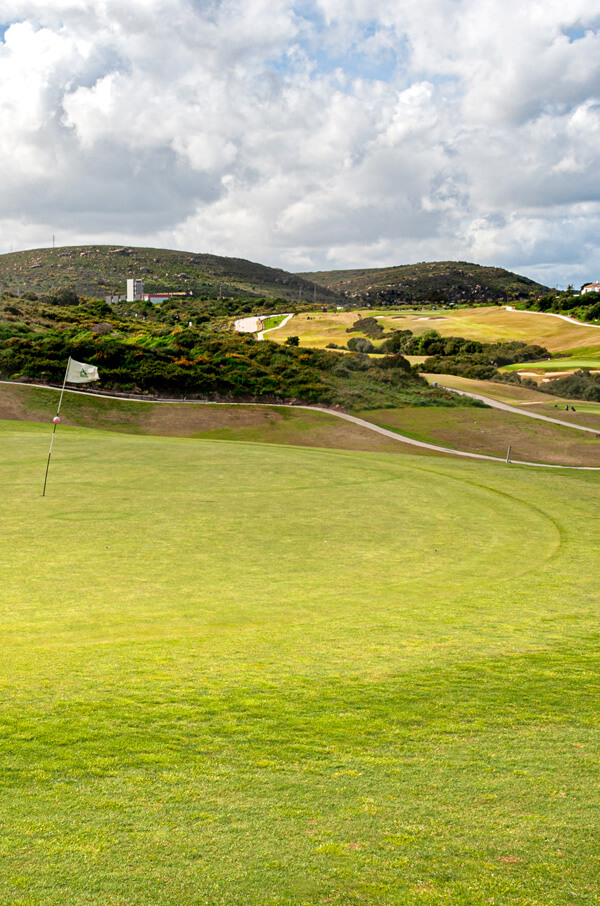
IS COSTA DE LA LUZ YOUR NEXT TRIP?
From Cádiz to Vejer de la Frontera, Caños de Meca or the coast and it’s beautiful beaches, you can explore the seaside villages along the Costa de la Luz. And if you are more adventurous, you can head to the nearby port town of Algeciras or Tarifa and embark on an exotic adventure in North Africa.
Today, Cádiz is still one of Spain’s leading ports and has a vibrant cosmopolitan culture. From the palm-lined promenades to plazas filled with fragrant orange trees, Cádiz has plenty of Mediterranean charm to match the balmy weather.



